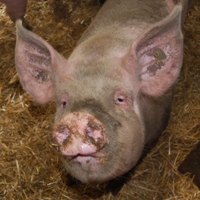Total costs for environment highest in Ontario

Total cost of environmental compliance for Canadian hog operations is the highest in Ontario and lowest in New Brunswick.
While regulations in Quebec are restrictive in comparison to other provinces, the environmental costs incurred to comply with the regulations in Quebec are lower than other jurisdictions.
Those were two of the outcomes of a recently released study, commissioned by Agriculture and Agri-Food Canada (AAFC), which assessed the economic impact of environmental regulations on the competitiveness of hog farms in Canada.
Competetive advantage
The research also found that the province of Saskatchewan has the best competitive advantage in terms of net income per hog before and after the implementation of environment regulations.
The province of Nova Scotia turned out to be at the greatest competitive disadvantage in terms of net income per hog, the study showed, due to the higher estimated building costs.
The report, completed by the George Morris Centre and the Prairie Swine Centre, analyses the effect of environmental compliance on a hog farm’s cost structure.
Understanding
The study provides a clear understanding of the competitive advantages and disadvantages for hog producers in provinces that have varying levels of environmental regulation.
The reason for the study was the abundance of environmental regulations across Canada, aiming to protect the environment and encourage environmentally sound agricultural practices. As agricultural producers expressed concerns about the impact these regulations have on costs, the AAFC began to investigate the impact of environmental regulations on primary agriculture through a series of case studies, starting with the hog sector.
The research used a model farrow-to-finish operation as a case study.
Related websites:
• George Morris Centre
• Agriculture and Agri-Food Canada (AAFC)
• Prairie Swine Centre
For the latest pig news, subscribe here











